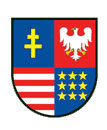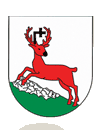The majority of ordered furnace clusters were built most probably within a relatively short period of time. A rapid increase in iron production could have been provoked by emergence of a demanding external market. Most probably it took place in the second half of the 2ns century A.D. during the so-called Marcomanni Wars. Between 167 and 180 Germanic tribes of Marcomanni, Quadi as well as Sarmatian Lazyges under the pressure of peoples living further north, crossed the Roman limes forcing their way into the Empire and reaching even Aquileia in Italy. The opening scenes of the well-known cinema production ‘Gladiator’ depict the last campaign of the many years’ fights of Rome with the barbarians. One of the suppliers of iron for the tribes living then on the Roman borders could have been the Świętokrzyskie metallurgical center. The barbarians were finally removed from the Roman provinces before the year 180 A.D. Bas-relief of the Marcus Aurelius’ column show us that is was a very dangerous enemy even for a well-trained imperial army. In the year 180 a Roman squad spent a winter in a Slovakian town of Trencin and as a proof of their stay they left there an inscription. Is probable that Roman scouts reached lands farther north on the current Polish territory, however no traces of their stay have been found until today.
The Emperor Commodus (ruled between 180 and 192) resigned from ambitious plans of his father who intended to transform the lands conquered during Marcommani wars into two new provinces – Marcomania and Sarmatia. The Romans left other traces of their stay also in Slovakia and Moravia. These are mainly legionary marching camps – frequently traces of a daily stay of Roman soldiers. In Moravia and Slovakia there are also many remains of buildings of Roman character which could have functioned as centers of trading exchange not only before the mentioned wars but also in peace times during the reign of the Severan dynasty. It is not unlikely that the mentioned influence of the ‘internal barbarians’ (superiores barbarii) was connected with the beginning of the expansion of the Gothic tribes in the direction of the shores of the Black Sea. With Goths and Gepids the peoples of the Wielbark culture are associated. In the 2nd century A.D. it superseded the representatives of the Przeworsk culture beyond the Vistula river occupying the right bank side of its river-basin. The Świętokrzyskie Mountains became a neighbouring territory to the migration zone which can be proved by coloured metal ornaments characteristic of the Wielbark culture found there. It is possible that within the same time Goths were interested in iron from the Świetokrzyskie region. Archaeological sources do to indicate clearly the precise chronology of the fluctuation in iron production in the Świętokrzyskie center thus the assumptions quoted above remain in the sphere of hypothesis.

Combat scenes from the Marcomanni Wars on the Marcus Aurelius column in Rome. Photo by M. Osojca.
Metallurgical activity in the Świętokrzystkie Mountains had both the dynamic periods as well as times when iron production decreased. Probably already in the mid-3rd century A.D. it was gradually limited until it was stopped completely. It is certainly about mass production for an external market. It can be assumed that metallurgical activity aimed at satisfying local needs was continued along the Przeworsk culture settlement which remained on this territory at least till the end of the 4th century. Research on the chronology of the metallurgy from the Świętokrzystkie region is still not sufficient therefore dating of the metallurgical activity in the Świętokrzyskie Mountains should be précised by new research. The subject is widely discussed in the book ‘Region of iron. Metallurgical centers of the Przeworsk culture’ by Szymon Orzechowski (Kielce 2012, page 450).











